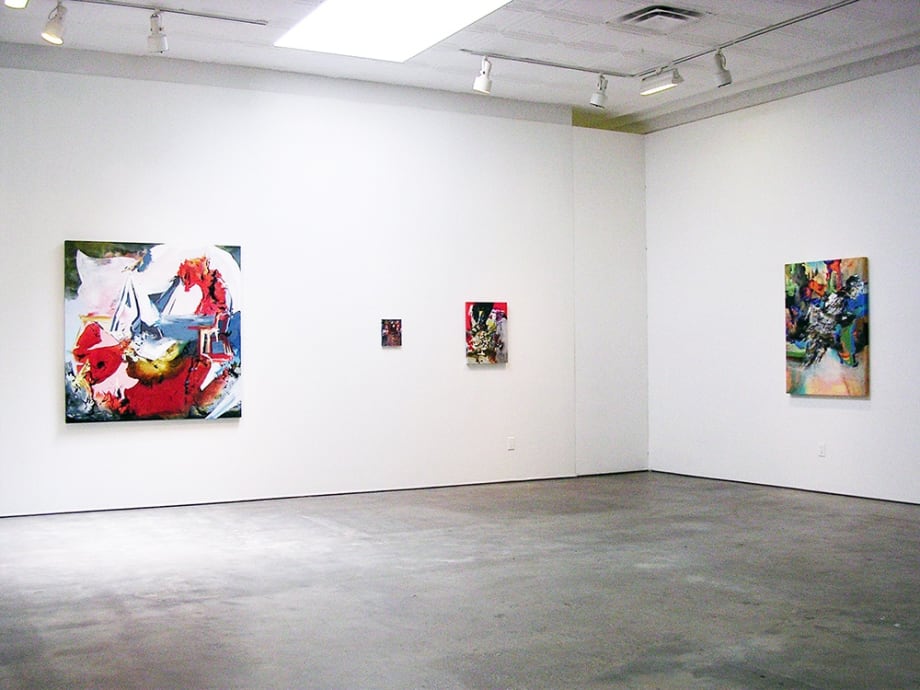“Field and Territory,” Kim Piotrowski’s exhibition on view at Marcia Wood Midtown through April 30, shows how painting can collapse abstraction and realism into a cohesive whole. This suite of 16 paintings, which range in size from notebook to flat screen TV, features strong gestures, layering of color, and apparent figures. What results are images that move from being abstract to representational, based on how and when you view them. The light in the gallery and viewing angle can change what one sees on the canvas. Piotrowski’s work comes across like painterly lenticular prints (those photos with the ridged plastic surface that alters the image as you move side to side) as they dance about between Pollock and Pissarro.
The painting 50/50, at first glance, is about the vibrant swirl of colors in the center of the picture plane. Explosions of reds, pinks, and whites leap forward from their more neutral blue-toned background. The warmth of this part of the painting suggests life, renewal, and the lightness of being. Move to the left of the painting, and the light hits the piece to reveal another figure. A lurking creature, rendered in glossy black, is picked up by the light and crouches over the swirl of warm colors. At just the right moment you can see darkness and death looming over what initially appeared joyful. Perhaps this is the 50/50 suggested in the title—the balance of lightness and darkness, life and death, inherent in all existence.
The Wait features a more apparent use of realistic forms to create narrative. The two most discernible figures are oblong disks of flesh-colored paint, evoking a set of legs. Clouds of red, blue, and seafoam billow out of these legs, suggesting a frilly dress. Moving up this abstracted feminine form, you find no arms, neck or head. They are replaced by dabs of lime green, scarlet, and peach, like a wedding bouquet. Surrounding the upper body of this figure is a sea of battleship gray. Indeed, she seems to be waiting on something — love, or anything to saturate her aura with joy.
Still Niagara is probably the most literal work in the show. Just as the title suggests, this work is like a painterly portrait of Niagara falls. Swoops of cyan water fall down the right side of the painting over blocks of navy meant to depict rocks. What’s most interesting about this piece is Piotrowski’s use of several techniques with acrylic ink. In addition to the long, painterly strokes of water pouring over the palette-knife cleaves of rocks, there is the stippling of white and blue meant to capture the crashing and churning water. Above this, delicate brushstrokes of gray paint create ghostly sprays of water at the top of the falls. Across the entire picture plane is a series of smart techniques, rendered in a soothing color palette, meant to draw your eye repeatedly over the falls.

So many of the paintings in “Field and Territory” change and morph as you move around them. Hidden figures are dotted all throughout the show, and give life to the otherwise abstract works. Caprice has a figure rising from a school desk, his body rendered in blood red. A form resembling a dunce cap sits in front of the figure. Your distance from Shook Again will alter what you see as the dominant figure. From far away, splashes of neon pink, like drunken memories from a disco, demarcate most of the painting. Up close, what looks like a single eye peers back at you from a darkened crowd.
Piotrowski’s work encompasses many different layers and styles and still creates a cohesive narrative for the viewer to connect with. Her work is imbued with so much emotion and spirit that it upends assumptions that abstraction is cold and impersonal.

